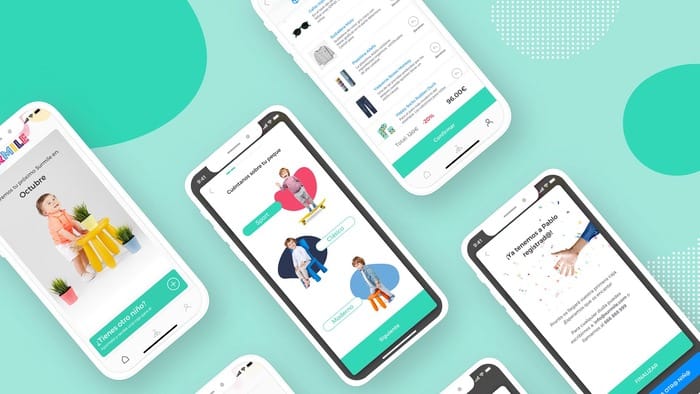Imagine you’ve just downloaded a new app or visited a new website. As you navigate through it, everything seems to fall into place – the buttons, the icons, the menus. Everything is where you’d expect it to be, and you glide through the tasks you set out to do. This is the magic of intuitive UX/UI design. But what is it that makes a design intuitive? Let’s dive in and find out.
The Importance of Intuitive UX/UI
Intuitive UX/UI design is no longer a luxury but a necessity in today’s digital world. It’s about crafting a user interface that feels second nature to the user. It’s about creating an environment where users don’t need an instruction manual to navigate your digital product. This directly affects user satisfaction and engagement, influencing your product’s success rate.
Understanding the User
The cornerstone of creating intuitive UX/UI is understanding your users. This involves not just knowing who they are but understanding their needs, preferences, and behaviors.
User Personas
User Personas are a powerful tool that helps designers step into the users’ shoes. They are fictional characters, embodying the characteristics, behaviors, and needs of your different user groups.
User Journey Mapping
User Journey Mapping goes a step further. It visualizes the process that a user goes through to achieve a goal in your app or website. This visualization allows designers to identify potential friction points and streamline the user’s journey.
Design Principles for Intuitive UX/UI
Several design principles can help you create a more intuitive UX/UI:
Simplicity
The beauty of an intuitive interface lies in its simplicity. Cluttered interfaces can be overwhelming for users. Stick to a clean, uncomplicated design that focuses on the essentials.
Consistency
Consistency across your design assures a smooth user experience. This means using consistent color schemes, typography, and design elements, so users don’t have to learn new patterns as they navigate through your product.
Usability
Prioritizing usability can significantly improve the intuitiveness of your design. This includes making commonly used features easily accessible and ensuring that the design responds to the user’s interaction as expected.
Effective Use of Icons
Icons are intuitive symbols in your UX/UI design arsenal. When used correctly, they can significantly enhance the intuitiveness of your design. They should be simple, clear, and universal, reducing the cognitive load on the user and guiding them through their journey. For instance, Icons8 offers a great variety of icons for every occasion.
The Process of Creating Intuitive UX/UI
Creating an intuitive and interactive UX/UI is an iterative process that includes research, sketching and wireframing, prototyping, and testing.
Research
Market research, user interviews, and surveys help uncover insights into user needs and preferences. These insights lay the foundation for the design process, ensuring that the design aligns with the users’ expectations.
Sketching and Wireframing
During this phase, designers create low-fidelity sketches of each screen, allowing them to plan the layout and element placement. Wireframes serve as a blueprint for your design, highlighting the structure and layout of your product without getting bogged down in aesthetic details.
Prototyping and Testing
Prototyping brings the wireframes to life, giving the team a more accurate preview of the final product. Testing the prototype with real users allows for the evaluation of the intuitiveness of the design and provides an opportunity for adjustments before the final implementation.
Case Studies of Intuitive UX/UI Designs
Several well-known companies have excelled in creating intuitive UX/UI designs, including Google and Apple.
Google’s design approach embodies simplicity and functionality, resulting in a highly intuitive UX/UI. Their simple and intuitive use of universally recognized icons and minimalist aesthetic helps users easily navigate their various applications.
Apple
Apple’s design philosophy hinges on the perfect balance between aesthetics and usability. Their products, known for their sleek and intuitive design, allow users to navigate effortlessly across different apps and features.
Challenges in Creating Intuitive UX/UI
Designing an intuitive UX/UI isn’t without challenges. These can range from a lack of understanding of user needs to managing the demands of a diverse user base, and staying up-to-date with rapidly evolving technology trends. However, with a user-centric approach and a commitment to continuous learning and adaptation, these challenges can be successfully navigated.
Future Trends in UX/UI Design
The UX/UI design landscape is always changing. The future will likely see further integration of emerging technologies like AI and VR/AR, the rise of voice user interfaces, and a growing emphasis on accessibility and inclusivity. Designers need to stay ahead of these trends to create truly intuitive experiences.
Conclusion
Creating intuitive UX/UI is an art that combines a deep understanding of the user, adherence to design principles, and an iterative process of creation and refinement. It’s more than just creating a pretty interface; it’s about crafting a seamless and enjoyable user experience that feels just right. With the right approach and commitment, you can master this art and create designs that resonate with your users and stand the test of time.

